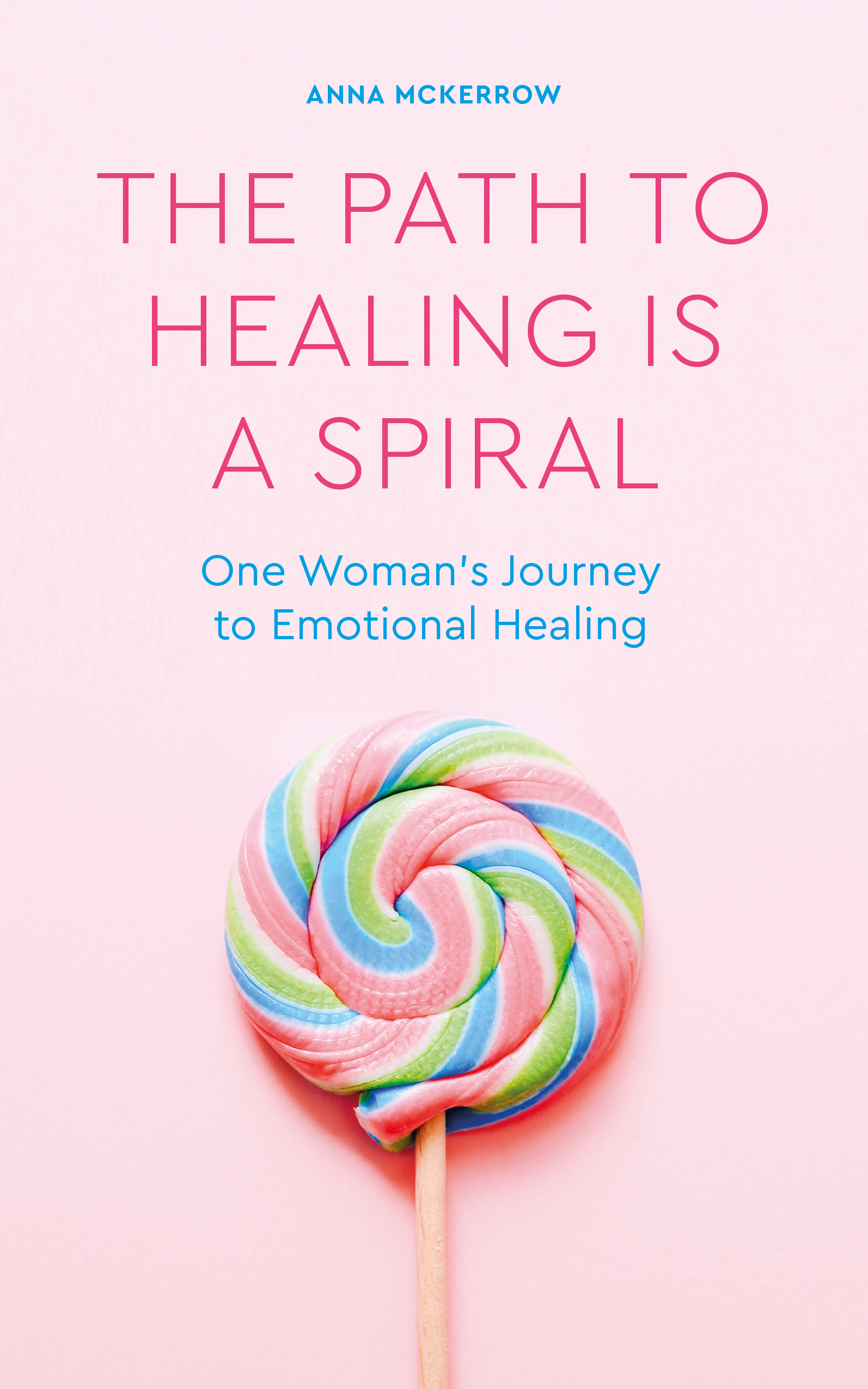
This is an excerpt from Anna McKerrow’s book, The Path to Healing is a Spiral.
~
Six breaths is all it takes to move on.
This is what Matthew and Adam, two ex-builders, now breathwork facilitators, explained to us as we sipped tea in a room above a mechanic’s workshop on an industrial estate.
In terms of glamorous locations, I really felt like I’d hit the big time. When driving in, I’d parked in the forecourt of a paint manufacturer, and when looking for the place I’d been told to find, walked past several men in overalls smoking cigarettes. The industrial estate in question backed onto a canal, which was pretty in parts but—as in this part—was grimy and covered in graffiti in others.
I’d paid (a nominal amount) to be here for a three-hour workshop session, and I was curious to learn more about breathwork. There were only three of us taking the workshop and two instructors.
I’d heard about breathwork for a long time, in fact, as it was another therapy taught by the group I’d done my original Reiki level One and Two with. Yet, until now, I hadn’t been compelled to try it. I don’t know if it was a psychic impulse that something bad was coming, and I wouldn’t have an opportunity again to do healing in person for a while (this was the month before the COVID-19 lockdown started), but something attracted me to the mention of the low-cost workshop in an email. I signed up.
Breathwork is a fast-breathing method that puts you in a kind of trance state where it is easier to express emotions. The concept is that breath regulates our perceptions and emotions, and when it’s sped up to a certain rhythm for limited periods of time, it makes it easier for your unconscious to release stored trauma. Matthew and Adam had both turned their lives around with breathwork and explained to us how trauma is stored in the unconscious, building up over time so that our systems have to commit more and more energy to dealing with it and maintaining it on an unconscious level.
Matthew gave us the image of the huge warehouse that the Ark of the Covenant gets lost inside in “Raiders of the Lost Ark.” Imagine, for a moment, your own unconscious, full of boxes. Wouldn’t it be a relief to let go of some of them? All those old thoughts, fears, patterns you didn’t even know were in there? Imagine how much more room you’d have for new things—fresher ways of being, healthier patterns—more aligned to your well-being. Or just the emotional space to be.
Okay. I was ready for this. To be honest, I didn’t really expect anything to happen to me during the breathing except the state of pure bliss Adam had described. Sometimes, if there’s nothing to dump out of the warehouse, you get to a blissful state of just being, he’d said. Being with the universe. Seeing the workings of the universe in their divine glory. Knowing that you are a divine, beautiful part of creation.
Yeah, I was up for that. I’d been a Reiki practitioner for years now. I’d been a practising witch. I had Done Stuff. I gazed at my fellow workshop-takers with a kind of sickening humanitarian humility. They might have some stuff come up. I knew that I wouldn’t because I’d already cried in community centres so many times now. I’d bawled on treatment tables. I had given myself up to healing so many times. If I wasn’t whole by now, then I was close.
Oh, kind reader, I feel like you know where this is going. I lay down on a yoga mat, my head on a pillow, and arranged a blanket over me. So far, so cosy. Matthew turned on some music: a specially curated playlist. Some classical music began. I started the breathing, following the pattern Adam was demonstrating. It was a little hard to get used to, but then I kind of got the hang of it. It was like forcing yourself to be out of breath.
We listened to emotive music—Bach to Eminem—and did the breathing.
Within a few minutes, I started to feel an emotion bubble up inside me. I kept breathing.
Apparently, there is a difference between the breathing method we were doing and what’s called holotropic breathwork, which is designed to make you hallucinate and thereby access your unconscious, much in the same way as using hallucinogenic drugs might. The benefit of breathwork is that the effects will disappear as soon as you change your breath, which isn’t the case with LSD, ayahuasca, or psilocybin. With those, once ingested, you’re in for the long haul, like it or not.
I started laughing. Super hilarious giggles. On my own, laughing at my own private joke, whatever it was. There was no joke, nothing going on in my head, just the urge to laugh, so laugh I did.
The thing about the breathing method we were doing is that it puts you in a kind of slightly dreamlike state, even though you are totally aware of where you are and who you are. I felt less inhibited than I might normally be about making noise—laughing maniacally, in this case—in a room with four strangers.
After the laughing stopped, I did some more breathing and listened to the music playing. Maybe laughing was all that was going to happen. That was okay. I remembered the one time I had taken LSD as a teenager and spent the first hour laughing uncontrollably. It definitely beat the following 15 hours of frantically trying not to spiral into a mental re-run of Poltergeist-meets-The Exorcist.
But then a wave of sadness washed over me, and I felt the familiar tension of tears clench my throat. Agh, really? I was going to cry. I came out of the breathing for a bit to try and regain control, but Matthew knelt down next to me and reminded me to breathe.
F*ck. F*ck. F*ck. I was going to bawl. I could feel it rising. I let it go and surrendered to the experience. Why was I crying? Was I that suggestible to emotive music?
I was still sad about losing my mum. I felt the wounded child inside me crying out for security. I missed her; I mourned my childhood. When you lose your parents, or the parent that was there in your childhood, you lose your childhood, which I didn’t realize until it happened to me. You lose the person—or people—who can recount to you the funny times, the first words, the birthdays, the pets, and the Christmases.
Losing Christmas was a big thing for me. It’s still a big thing. I’m welling up as I’m writing this, feeling the ache in my chest for those beautiful, perfect days, what seemed like the one day of the year when mum would let go and have fun, when she wouldn’t work. She was always working, every day, and often into the night. Working to keep everything going. To keep that roof over our heads. Christmas felt like the one day I had her to myself.
I know that wasn’t literally true. But that was the emotion that came whooshing up from my belly and through my heart. Matthew gave me a cushion to hug. “Do you have children?” He asked in a low voice. I nodded, sobbing. “Hug the pillow like you’d hug them. Comfort yourself like you’d comfort your own child,” he added. “And breathe. Six breaths and this is over. It’s gone. You won’t hold it anymore.” He helped me breathe. Six deep, intense breaths. I breathed the loss in and out. Terrible, deep loss I already thought I’d dealt with. But it was still there.
The healing journey is a spiral. Around and around, past the same points, coming back to them to look at them from different angles, to heal in different ways. A spiral, starting at the centre, radiating out into peace.
The feeling ebbed away. I slowed my breathing for a bit. Matthew tapped me on the shoulder. “Well done,” he whispered, and left my side.
Anna McKerrow’s The Path to Healing is a Spiral: One Woman’s Journey to Emotional Healing is out on September 14th priced $16.95 and is available at all good book stores.

Please consider Boosting our authors’ articles in their first week to help them win Elephant’s Ecosystem so they can get paid and write more.











Read 2 comments and reply